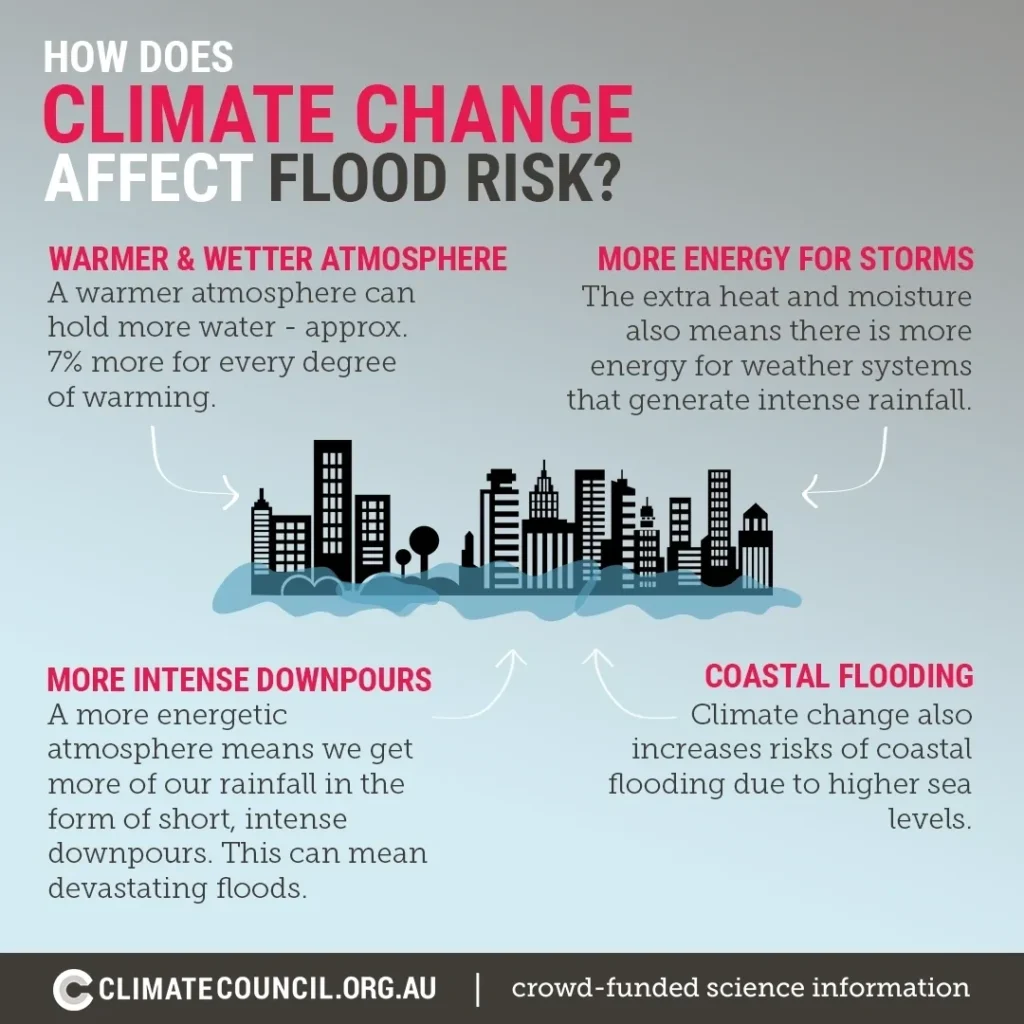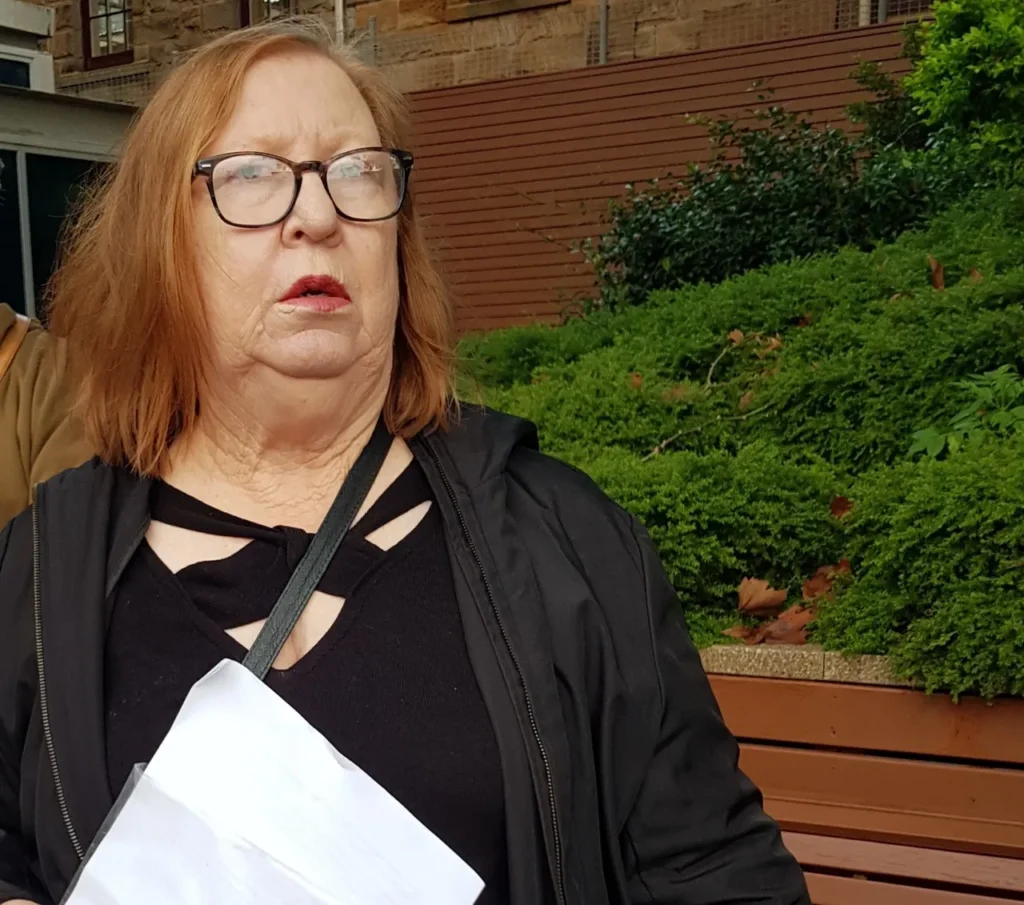
Central Coast Council’s flood update on March 23 gave a vivid description of what it’s like to live in one of the most climate-change affected regions on the east Coast of Australia.
The council’s workers had been “on the ground managing road closures, responding to water and sewer interruptions and supporting emergency services, as severe weather and flash flooding impacts the region.
The Bureau of Meteorology had issued as severe weather warning for the day which included the Central Coast. “Heavy rain is predicted at times throughout the morning and afternoon, easing into the evening”.
Residents were advised to secure loose items from around their property and move vehicles away from trees. Trees may be unstable as a result of the significant rainfall.
Localised flooding continued to impact areas across the Central Coast, according to the council update. SES crews had received more than 765 requests for assistance across the Central Coast since the beginning of the event and were inspecting known hotspots for flooding and undertaking welfare checks with affected properties.
Sandbags could be collected from local SES collection points.
An evacuation reception centre was set up by Disaster Welfare Services, Resilience NSW to assist community members affected by flooding. The centre was located at Diggers @ The Entrance. A number of agencies were onsite to offer support including Chaplaincy Network, Red Cross, Disaster Welfare Assistance, Housing Contact Centre, Salvation Army, Local Land Services and Samaritans.
At 5.45am on Monday 22 March, flood levels at Tuggerah Lakes peaked at 1.52m. As at 9.30am on Tuesday 23 March, flood levels at Tuggerah Lakes were at 1.21 metres and steady. Low lying properties were impacted by the flood event of this scale.
“This is higher than the April 2015 flooding event when levels peaked at 1.45 metres, but less than the February 2020 event which reached 1.67 metres when many roads and properties were flooded. Based on previous events it will likely stay at this level for up to 36 hours and likely not subside to below minor flood level (0.9m) at least until Wednesday.”
A rapid impact assessment was undertaken by the SES, with welfare checks being conducted at impacted properties. Council undertook precautionary channel maintenance at The Entrance on the morning of Friday 19 March 2021.
The Entrance Channel remained open and flowing with an estimated width of over 120 metres. This is significantly wider than it was at the commencement of the February 2020 flood event. The minor channel maintenance work removed a small amount of sand on the north side of The Entrance Channel to allow for a more direct flow path of predicted floodwaters. Heavy machinery was on standby nearby should any further unforeseen works be required.
Wyong River affected low lying farmland. Landowners were advised to monitor equipment and livestock noting local road closures along the Wyong River.
Other impacts included St Cecilia’s Primary School grounds, water over Panonia Road and South Tacoma Road under Pacific Highway bridge restricting access to Tacoma South. McPherson Road closure is restricted access to the Wyong Nursing Home.
A number of properties had water and sewer services impacted. Council crews worked through repairs as quickly as possible in the difficult conditions.
Portable toilets were placed at various locations in Davistown and South Tacoma due to sewer service interruptions.
Multiple local roads were closed due to flooding and have been damaged as a result of the severe weather even including all low-lying roads close to Tuggerah Lakes are impacted.
Access to Kincumba Mountain was closed due to subsidence damage and Island View Dr was closed until further notice.
Trainlines were been impacted by the severe weather event, with rail replacement buses in place for range of travel routes.
Council will remove fallen trees and debris from Council property over the coming weeks.
Residents were reminded to avoid swimming and any other recreational contact with the Coast’s waterways during (and for a few days after) the current significant rainfall.
If you’re considering a swim after the weather subsides and want to know if your beach is safe to swim, Beachwatch provides daily pollution forecasts.
Power outages affected a number of suburbs across the Central Coast.
The bigger picture
Climate Councillor Professor Will Steffen decided to use the extreme weather events of the past week to educate the public about the links between extreme weather and climate change.
He said he encouraged people to share the above graphic as a simple way to explain how climate change is leading to more frequent extreme weather events.
“It’s been devastating watching the worsening flooding disaster unfold,” Prof Steffen said. “New South Wales and Queensand have been hit particularly hard so far, whilst 10 million Australians are currently subject to an extreme weather warning covering every state and territory except Western Australia.
“We hope you are keeping safe and encourage you to keep up to date with the emergency warnings via your local State Emergency Service (SES),” he said.
“Many people have been asking us over the past few days how flooding events are being influenced by climate change, so here are the facts.
“Globally, the risk of extreme rainfall and flooding events like those currently devastating Australian communities is increasing with climate change.
“The global average temperature has already risen by around 1.1°C, and for every 1°C rise in temperature, the atmosphere is able to hold around 7% more water.
“This extra heat and moisture means more energy for weather systems that generate intense rainfall, and in Australia, we’re already seeing an increase in the intensity of heavy rainfall events.
“Our weather over summer and autumn has also been influenced by a La Niña event, which tends to bring more rain for much of Australia. But it’s important to remember: everything we are experiencing today is occurring in the context of a rapidly warming planet.
“Our thoughts are with the many Australian communities dealing with the floods right now. For many, this is the latest in a line of climate change-exacerbated extreme weather events they have faced, including drought, the Black Summer bushfires, and scorching heatwaves.
“It’s time for all levels of government and businesses to step up their climate efforts by helping communities cope with increasing extreme weather events; and cutting emissions so that we protect people, their livelihoods and our environment.
“Our leaders must take decisive action now to bring climate change under control.
“Many will remember 2020 as the year of the COVID-19 pandemic. Yet for millions of people around the world, the virus served as a backdrop to another battle as we lived through the most intense period yet of climate fuelled extreme weather.
“Unprecedented fires, extreme heat, powerful cyclones and devastating floods all occurred in 2019-20, capping off a decade in which the climate crisis hit hard.
The Climate Council’s report “Hitting Home: The Compounding Costs of Climate Inaction”, outlines the latest science on how climate change is driving more destructive heatwaves, downpours, cyclones, droughts, fires and other extreme weather events.
“It highlights significant events in Australia and around the world from the past two years. Taken alone, any one of the events described in this report – from Australia’s Black Summer bushfires to the record breaking North Atlantic hurricane season, or the remarkable Siberian heatwave – would mark the year as unusual. Taken together, they paint a disturbing portrait of our rapidly escalating climate emergency.
Key Findings
2019-20 was an exceptionally intense period for climate-fuelled extreme weather, with heavy costs felt in Australia and around the world.
An extraordinary run of events, including unprecedented fire seasons in Australia and the US, a record-breaking North Atlantic hurricane season, and an astonishing series of heat records, paint a sobering portrait of our escalating climate crisis.
Extreme heat events are rapidly on the rise both here, and overseas. The latest science projects that by 2100, annual deaths from extreme heat worldwide will outstrip all COVID-19 deaths recorded in 2020.
The cost of extreme weather disasters in Australia has more than doubled since the 1970s, reaching $35 billion for the decade 2010-2019.
Australians are five times more likely to be displaced by a climate-fuelled disaster than someone living in Europe. In the Pacific, that risk is 100 times higher.
Australia is surrounded by many countries that are acutely vulnerable to climate impacts. Those unfolding regional impacts may soon become as damaging to Australia as those that strike us directly.
“Some extreme weather events show ‘tipping point’ behaviour when a critical level of heat or drought triggers a massive, devastating event.
In 2019-20, we ushered in a new and dangerous era of megafires that ravaged Australia, Brazil, Siberia and the US West Coast. During the massive Black Summer bushfires, we likely crossed a tipping point for Australia’s temperate broadleaf and mixed forests. In any typical fire season, 2-3 percent of these forests burn, but in the Black Summer 21 percent burned.
Around half of all hard corals along the Great Barrier Reef perished during successive mass bleaching events in the past five years. We are on track to eliminate all of Australia’s and the world’s tropical coral reefs.
Ignoring climate change is deadly. Australians are now paying the price for our own and the world’s failure to reduce emissions quickly enough or deeply enough.
Governments, like the Australian Government, which have failed to substantially reduce emissions over the past decade have sentenced Australians, and communities worldwide, to a far more dangerous future than if they had responded to repeated warnings from scientists.
Due to this past inaction, gradual, measured steps are not enough to avoid catastrophe. At this point, only truly transformative action is required. That means at least halving global emissions over the coming decade, and reaching net zero emissions globally by 2040 at the latest.
No developed country has more to lose from climate change-fuelled extreme weather, or more to gain as the world transforms to a zerocarbon economy, than Australia does.
We need bold, concerted action across all levels of government, business, industry and community to reduce Australia’s emissions to net zero as soon as possible, and prepare for worsening extreme weather events.
Almost all of Australia’s major trading partners and strategic allies, as well as Australian state and territories, are now committed to net zero emissions by around mid-century. This includes countries that buy more than 70% of our coal and gas exports.
Australia can position itself as a global powerhouse of renewable energy and clean industries, ensuring our prosperity and security in a post-carbon world.
If you need assistance during a flood event, call your local State Emergency Service (SES) on 132 500 or Triple Zero in a life-threatening situation.
New South Wales State Emergency Service
Victorian State Emergency Service
Queensland State Emergency Service
Western Australia State Emergency Service
Northern Territory Emergency Service
South Australian State Emergency Service
Tasmanian State Emergency Service
You can read the Climate Council’s whole report here.


